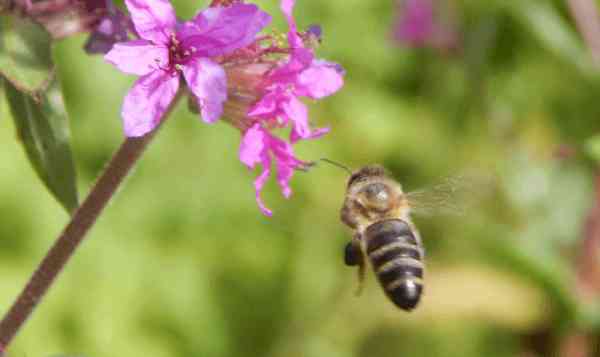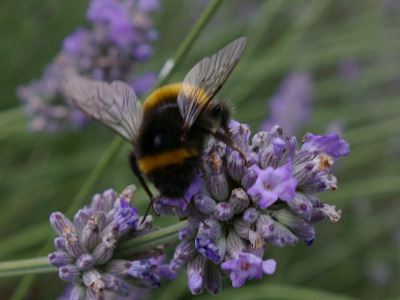How Many Wings Does a Bee Have?
Question:
How many wings does a bee have?
The short answer is:
Bees have 4 wings, 2 on each side of the body. The wings are attached to the 'thorax' - that's the middle part of the bee's body between the head and the abdomen. The wings of bees are not only used for flying, they have a number of other uses.
Now for more detailed information, along with some interesting facts about bee wings.
Exploring the Wings Of Bees
Bees have 4 individual wings in total, with 2 wings on each side of the upper part of the body (thorax):
- a forewing - the are larger wing closer to the head of the bee, (also known as the 'anterior wing') and
- a hindwing - the smaller wing (also known as the 'posterior wing').
Incidentally, 'forewing' is written as one word, where as 'hind wing' is written as two words.
The forewing and hind wing latch together during flight using a little row of hooks called a 'hamulus'.
Each wing features a number of veins and contains something called 'resilin' which is a bit like a super elastic rubber.
Resilin gives bee wings tremendous flexibility and strength, which is very important in movement and flight.
When bees fly, they use muscles in the thorax to pivot (twist and rotate) their wings in a flap which is a kind of arc movement, and they do this very fast. This action, combined with the super elastic flexibility in the wings thanks to resilin, helps the bee to fly.
Watch this stunning short video of bees in flight:
Interesting Facts About Bee Wings And Flight
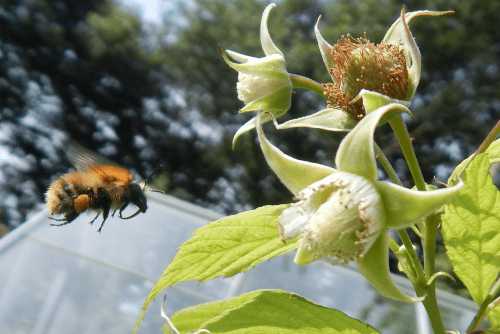
- Bees typically flap their wings around 230 times per second.
- Bee wings are covered in tiny hairs that pick up air flow.
- Different bee species have different vein patterns, and these patterns can be used by entomologists to help them with bee identification.
- Bees use their wings to communicate (see below).
- It is estimated that it would take one ounce of honey to fuel a honey bee’s flight around the world.
In Addition To Flying, How Do Bees Use Their Wings?
Bees use their wings in a number of ways:
- Thermo-regulation (temperature control) and nest ventilation
When a bumble bee queen emerges from hibernation in the cool months of the year, she vibrates her wing muscles very fast to generate heat before take off to embark on a foraging trip.
Honey bees are known to flap their wings to cool the hive or nest. In winter, honey bees form a cluster and again vibrate their wing muscles, this time to generate heat. - Communication
Bees use their wings to help them communicate.
For instance, wing-fanning behavior is used by honey bees to drive air over the 'Nasonov gland' and disperse pheromones that are key to communication - for example, helping young bees to locate the entrance of a nest site. - Honey making
In the making of honey, worker bees fan their wings over the nectar inside the wax cells. This causes the water content to evaporate, and the nectar to thicken into honey before it is capped with wax.
How Fast Can Bees Fly?
It is thought that a honey bee worker can fly about 15 - 20 miles per hour. Bumble bees can fly about 11 miles per hour. Bees may fly a little slower when laden with pollen and nectar.
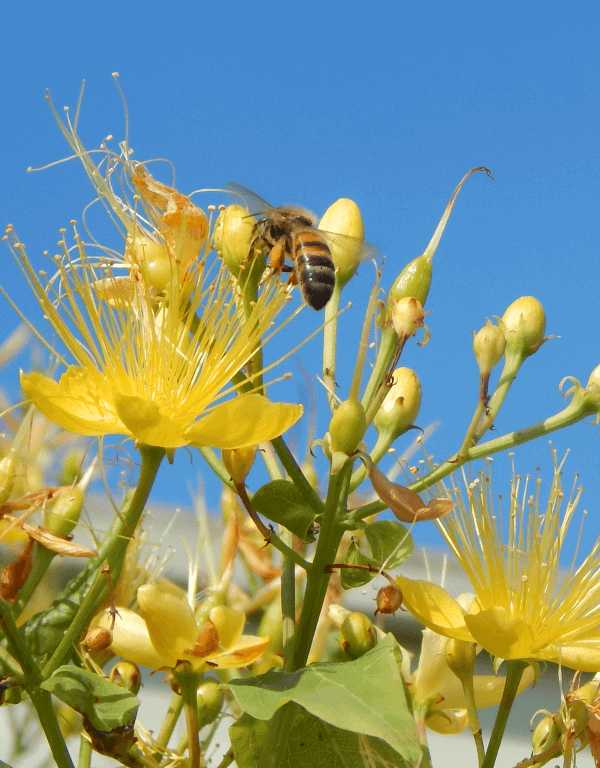
How High Can Bees Fly?
Researchers from the University of Wyoming have found that bumble bees can fly higher than Mount Everest. To be precise, researchers found bumble bees that were able to fly at more than 29,525 feet (9,000 meters)— which is higher than Mount Everest.
The researchers had captured and tested bees at high altitudes. They discovered that bumble bees adapted to the thin air at high altitudes not by beating their wings faster, but by swinging their wings through a wider arc.
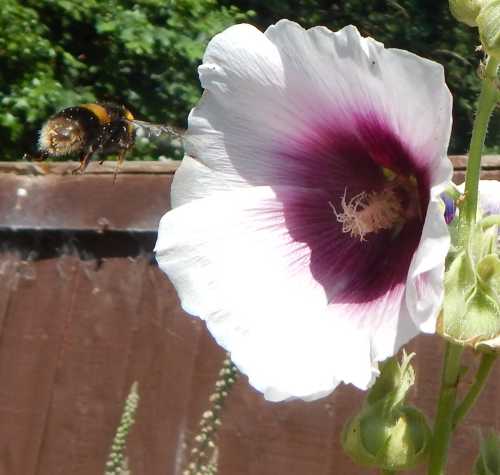
The Bumble Bee Paradox
In 1934 a French Scientist, Antoine Magnan, declared that insect flight was technically impossible. He wrote and published a book Le (Vol des Insectes) in which he said:
"First prompted by what is done in aviation, I applied the laws of air resistance to insects, and I arrived, with Mr. Sainte-Laguë, at this conclusion that their flight is impossible."
The bumble bee in particular, baffled scientists for many years. It seemed aerodynamically impossible that small wings could power the bumble bee - in theory, bumble bees should not be able to fly - yet obviously they could do so! Thus was born 'the bumble bee paradox'.
Later, a British scientist, Charles Ellington at the University of Cambridge, cracked the paradox, and performed much research that ultimately enables scientists to understand of insect flight today.
Resources:
- Ma, Yun & Ren, Huilan & Ning, Jianguo & Zhang, Pengfei. (2017). Functional Morphology and Bending Characteristics of the Honeybee Forewing. Journal of Bionic Engineering. 14. 111-118. 10.1016/S1672-6529(16)60382-7.
- Łopuch, S., Tofilski, A. Use of high-speed video recording to detect wing beating produced by honey bees. Insect. Soc. 66, 235–244 (2019). https://doi.org/10.1007/s00040-018-00678-5
- Jacob M. Peters, Nick Gravish, Stacey A. Combes. Wings as impellers: honey bees co-opt flight system to induce nest ventilation and disperse pheromones. Journal of Experimental Biology 2017 220: 2203-2209; doi: 10.1242/jeb.149476
- Sladen, F. W. L. (1901). A scent organ in the bee. Br. Bee J. 29, 151-153.
- Yun Ma, Jian Guo Ning, Hui Lan Ren, Peng Fei Zhang, Hong Yan Zhao. The function of resilin in honeybee wings. Journal of Experimental Biology 2015 218: 2136-2142; doi: 10.1242/jeb.117325
- Bumblebees Can Fly Higher Than Mount Everest, Scientists Find - National Geographic, 2014.
- Heinrich, Bernd, and Harald Esch. “Thermoregulation in Bees.” American Scientist, vol. 82, no. 2, 1994, pp. 164–170. JSTOR, www.jstor.org/stable/29775151. Accessed 3 Mar. 2021.
If you found this page helpful or interesting, I'd really be grateful if you would share it with others - if not this page, perhaps another, such as Gardening For Bees.
Thank you so much :) .

